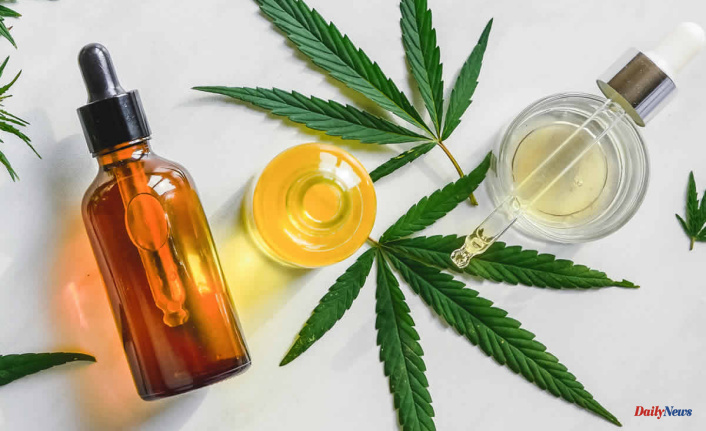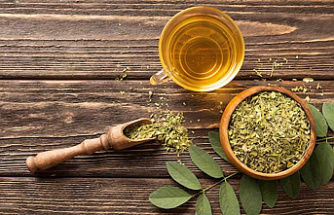From Plant to Body – The Journey of CBD Once Consumed
CBD or cannabidiol, has grown in popularity recently due to its possible health advantages. It is derived from the cannabis plant and is extensively utilized for various diseases, including pain management, anxiety alleviation, and sleep improvement. Understanding the journey of CBD from the plant to the body is critical. You will understand its effects helping you to make informed judgments when taking it.
The Extraction Process
Cannabidiol must be extracted from the cannabis plant before it can be used in various goods. Some of the ways of extraction include:
- Solvent-based extraction
- Steam distillation
- CO2 extraction.
CO2 extraction is the most prevalent and favored method because of its efficiency and capacity to create high-quality CBD extract.
CO2 extraction is extracting cannabidiol and other desirable chemicals from plant material using pressurized carbon dioxide. This procedure ensures that undesirable components such as THC, the psychoactive ingredient of cannabis, are removed, resulting in a pure CBD extract.
CBD Product Manufacturing
CBD is extracted and then processed further into various forms for consumption. The most popular cannabidiol products include:
- CBD oil
- Gummies
- Topicals
- Vape products.
Strict quality control methods are essential during manufacturing to assure CBD products' safety and efficacy. It includes evaluating the product for potency and purity, ensuring it contains the desired cannabidiol and is impurities-free. Compliance with regulatory standards is also required to ensure that the product complies with legal obligations.
Absorption and Metabolism in the Body
Cannabidiol is absorbed in the gastrointestinal tract when taken orally. Carrier oils, widely utilized in cannabidiol products, can improve CBD bioavailability, allowing for higher absorption. However, some CBD is first-pass metabolized in the liver before reaching u5 systemic circulation. Discover how does CBD work to find the answer to the question how cannabidiol operates in your body. It interacts with the endocannabinoid system, a complex network of receptors and neurotransmitters essential in maintaining balance and equilibrium in the body. This interaction affects various physiological systems, potentially leading to cannabidiol's desired medicinal effects.
Consumption Methods
The various ways cannabidiol products can be taken or used are called consumption methods. CBD is available in multiple forms, each with its qualities and implications. Here are some common consumption methods:
Oral Ingestion
Oral intake involves taking CBD products like CBD oil, pills, or edibles.
- CBD Oil: CBD oil is a versatile solution that can be taken sublingually (under the tongue) or blended with food and beverages for sublingual absorption. Because cannabidiol avoids the digestive tract and enters circulation straight through the sublingual glands, sublingual ingestion provides quicker absorption. Compared to other methods, this method has a slower start of effects but produces longer-lasting results.
- CBD capsules: These are pre-dosed and provide a handy approach to including CBD in your routine. They are swallowed and absorbed in the digestive tract. Capsules enable accurate doses, making them ideal for people who desire standardized dosing.
- Edibles: CBD-infused edibles, such as gummies, chocolates, or baked goods, are a delicious and discreet way to ingest cannabidiol. Edibles are consumed and processed by the digestive system. Since it must be digested and absorbed through the digestive tract, the onset of effects is slower than with sublingual ingestion. However, the effects are often long-lasting, making them a popular alternative for long-term relief.
Inhalation
Inhaling CBD vapor into the lungs is accomplished through vaping goods. This approach permits cannabidiol to enter the bloodstream quickly due to the lung's enormous surface area of blood arteries.
CBD vape oil, commonly known as CBD e-liquid or vape juice, is a vaporization-specific formulation. It is heated and converted into vapor, which is then inhaled with the help of a vaporizer or vape pen. Inhalation has instant results, generally within minutes, making it a recommended approach for those seeking immediate relief. The effects, however, may not continue as long as with oral intake.
Topical Application
Topical cannabidiol solutions are applied directly to the skin, focusing on specific regions for localized treatment. Examples of topical products include:
- Creams
- Lotions
- Balms
- Salves
The items frequently treat muscle aches, joint discomfort, and skin disorders. Cannabidiol interacts with cannabinoid receptors in the skin when administered topically, providing localized benefits without entering the bloodstream. As a result, topicals are appropriate for people who desire to avoid systemic effects.
Factors Affecting CBD's Effects
A variety of factors influence cannabidiol's impact on individuals. Understanding these variables is critical for optimizing cannabidiol usage and obtaining desired results. Here are some essential aspects that can influence CBD's effects:
Individual Factors
Individual body weight and metabolism can impact how cannabidiol is metabolized and utilized by the body. Individuals with a greater body mass index may require higher CBD dosages to have the same effects as those with a lower body mass index. The rate at which cannabidiol is metabolized and removed from the body is similarly affected by metabolism.
Genetics and the Endocannabinoid System
Genetic variations can influence how people respond to cannabidiol. Its interaction with the endocannabinoid system varies from person to person. Differences in cannabinoid receptor density and changes in the enzymes responsible for metabolizing CBD can influence how the body perceives and uses CBD.
Dosage Considerations
The dosage varies according to the individual and the desired results. To measure individual tolerance and reaction, it is critical to begin with a low dose and gradually increase it, a procedure known as titration. It enables individuals to determine their appropriate dosage, which offers the intended results while avoiding unwanted responses.
Duration and Elimination
The duration of the effects varies according to consumption mode, dosage, and individual characteristics. Cannabidiol's half-life in the body is usually around 18-32 hours, meaning it takes this long for half of the CBD to be cleared from the system. The duration of CBD's effects can be influenced by factors such as metabolism and the presence of other drugs.
Cannabidiol is mainly excreted from the body via metabolism and excretion. It is broken down into metabolites in the liver and eventually removed through urine and feces.
Conclusion
Understanding cannabidiol's journey from plant to body is critical for customers looking to capitalize on its potential advantages. Quality control and regulatory compliance are essential throughout the extraction process and the manufacturing of various cannabidiol products.
Individual tastes and desired outcomes should guide the selection of intake methods and dosage. The duration and efficacy of CBD in the body are influenced by absorption, metabolism, and excretion. As cannabidiol research advances, a better understanding of its mechanisms and advantages will likely emerge, improving its therapeutic potential.
Tia Moskalenko is an enthusiastic AskGrowers cannabis writer. She has interviewed over 100 cannabis brands, giving her valuable insights and understanding. Tia's writing has appeared in prestigious magazines such as Ganjapreneur and the Detroit Metro Times. Her devotion and knowledge make her a vital member of the cannabis community.
Date Of Update: 16 August 2023, 01:55











